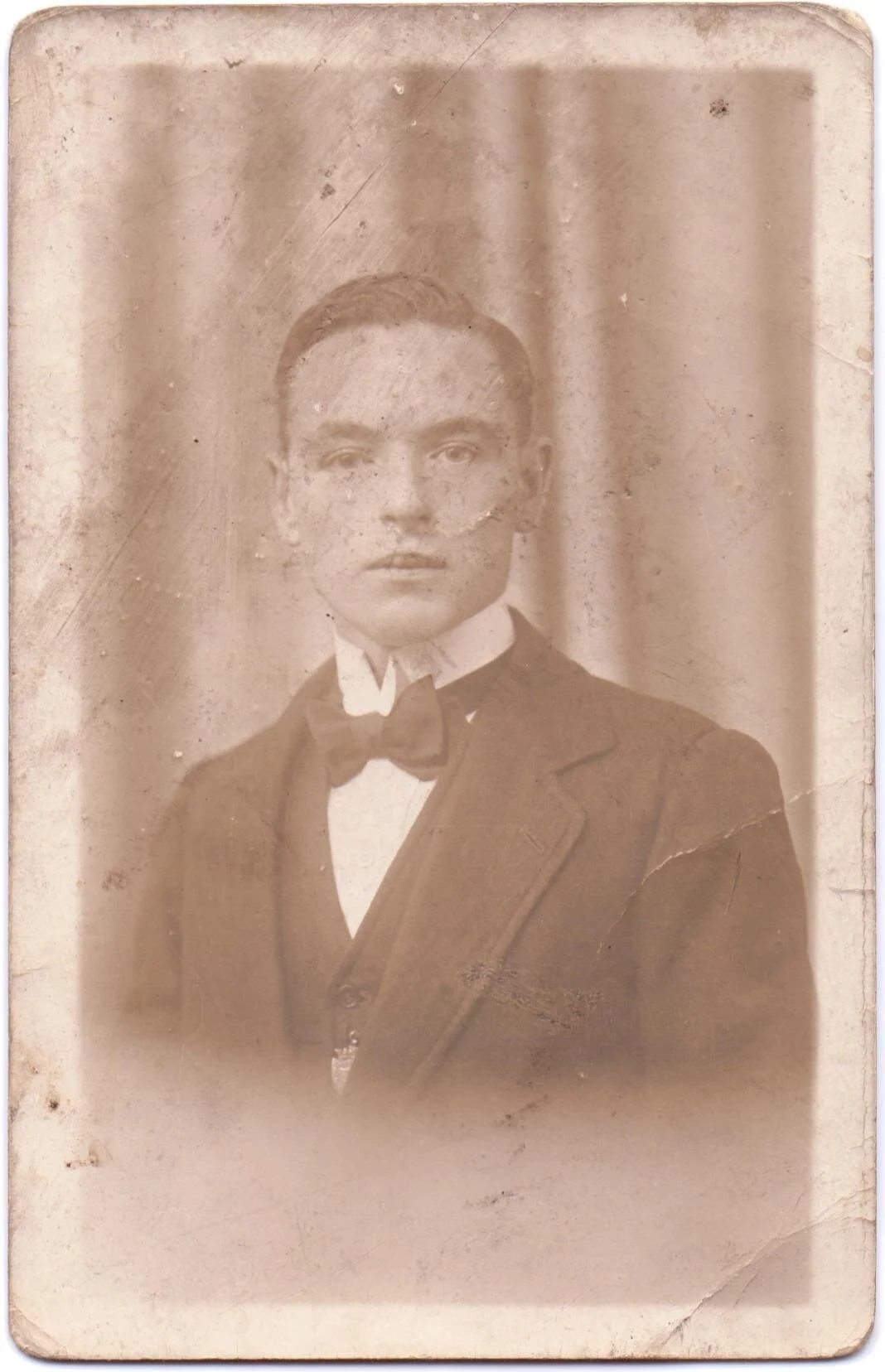William and James Neill
Brothers In Arms
Although there are many brothers depicted in the lantern slides, James and William were unusual as the photo that was used was one of them together. This was only the case for three sets of brothers. William is seated and James is standing.
Original Photo
This photo was provided by Robert Neill, son of William Neill. As is very clear from this image, Alex R. Hogg used photographs which already existed to make his lantern slides.
Survivors
James and William were the youngest sons of Robert James and Mary Jane Neill, just three years between them. In the 1901 census the large family were living in Mountcollyer Road - six adults and five children somehow managing to fit into their small house. By 1911 the family had moved to Deacon Street, and while the elder son had moved out and mother Mary Jane had passed away, there was a further child to feed.
James Neill was 22 years old when he enlisted in the Royal Irish Rifles 1914. While at the time of the 1911 census he was working as an insurance clerk, his service record gives his occupation as an Apprentice Blacksmith at Workman Clark, with “2 years and 9 months to go”. He was hospitalised in August 1917 before being transferred into the Labour Corps the next month.
He did survive the war and returned, at least temporarily, to his father in Victoria Terrace on the Limestone Road. In 1937, he can be found living in York Park but from here we don’t know what happened to him.
William was aged 15 and working as an apprentice carpenter at the time of the 1911 census. He later was indentured at the Workman Clark Shipyard where he pursued blacksmithing, the same trade as his father and elder brother. It was from the “Wee Yard” that he joined the Royal Irish Rifles in September 1914. William’s discharge papers show that his skill in blacksmithing was recognised and he was transferred into the Army Ordnance Corps.
After the war, he returned to his father at Victoria Terrace in Belfast. He served the rest of his time as an apprentice in Workman Clark and completed his indenture in March 1920.
That same year, William married Mary Graham of Gainsborough Drive whom he had met before the conflict and who he had corresponded with during his time at the Front. Mary’s brother Alexander, who had likely joined the 15th Royal Irish Rifles at the same time as William, went missing on the 1 July 1916 at the Somme and his remains were not recovered until 1956. He was then buried at the London Cemetery Extension near Longueval.
For a number of years after they were married William and Mary lived with Mary’s parents at Gainsborough Drive and their two eldest children Jeanie and Robert were born while they were there. By the time their youngest daughter Helen arrived, William and Mary had moved to their own home in Seaview Street. Helen died at the tragically early age of 8 in 1933, and her mother Mary passed away in 1938.
William went on to marry a second time - to widow Anne Weir and moved with his stepson Percy and Anne to Oldpark Avenue.
He continued to work as a blacksmith and when Workman Clark closed, he found a place at Harland and Wolff. His speciality as a blacksmith was the manufacture of hawse pipes, the part of a ship's bows through which the anchor cables pass. The heavy work close to the furnaces had an adverse effect on his health and after several years of ill health, he passed away in 1957, at the age of 61.
He was survived by his wife Anne, his son Robert, daughter Jeanie, step son Percy and 5 grandchildren/ step grandchildren.
Wedding Day.
William Neill and Mary Graham on their wedding day. Pictured with Mary’s sister Helen, and Bertie Jenkins, who she would later marry.



